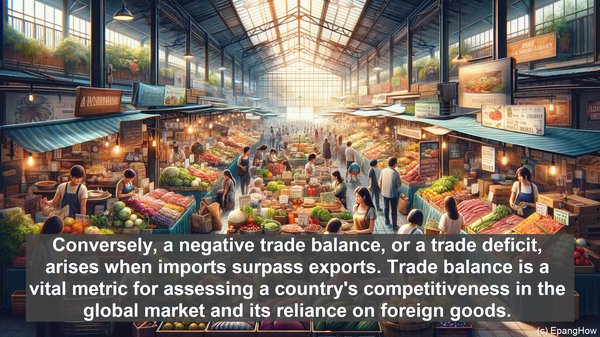Introduction: The World of Economic Indicators
Greetings, fellow learners! As we navigate the vast realm of economics, we encounter numerous indicators that provide insights into a country’s financial health. Two such indicators, trade balance and current account balance, often find themselves in the spotlight. While they may appear similar at first glance, they possess distinct characteristics and serve different purposes. Today, we embark on a journey to unravel the intricacies of these two crucial metrics.

Trade Balance: A Window into Exports and Imports
Let’s begin with trade balance. At its core, trade balance represents the difference between a country’s exports and imports. It serves as a measure of the value of goods and services a nation trades with the rest of the world. A positive trade balance, commonly known as a trade surplus, occurs when a country exports more than it imports. Conversely, a negative trade balance, or a trade deficit, arises when imports surpass exports. Trade balance is a vital metric for assessing a country’s competitiveness in the global market and its reliance on foreign goods.
Current Account Balance: A Broader Picture of Economic Transactions
Moving on to the current account balance, we find a more comprehensive indicator. While trade balance focuses solely on goods and services, the current account balance encompasses a broader range of economic transactions. In addition to trade in goods and services, it includes net income from abroad, such as dividends and interest, as well as transfers, like foreign aid. Essentially, the current account balance reflects a country’s overall economic interactions with the rest of the world. It provides insights into not just trade, but also factors like investment income and remittances.

Components of Current Account Balance: A Deeper Dive
To gain a deeper understanding of the current account balance, let’s explore its key components. Firstly, we have the trade balance, which we discussed earlier. Next, we have the net income from abroad, which comprises income earned by a country’s residents from their investments overseas, minus the income earned by foreign residents from their investments within the country. Finally, we have transfers, which include both official transfers, like foreign aid, and private transfers, such as remittances sent by individuals working abroad. By considering these components, the current account balance offers a more holistic view of a nation’s economic interactions.
Interpreting the Significance: Implications of Imbalances
Both trade balance and current account balance have implications for a country’s economy. A persistent trade deficit, for instance, may indicate that a nation is consuming more than it produces, potentially leading to a reliance on borrowing or a depletion of foreign reserves. On the other hand, a trade surplus can signify a strong export sector, contributing to economic growth. Similarly, a current account deficit, which occurs when a country’s total imports of goods, services, and transfers exceed its exports, can have various consequences. It may lead to a higher level of foreign debt or a decrease in the value of the country’s currency. Conversely, a current account surplus can enhance a nation’s financial position and currency value. Understanding these implications is crucial for policymakers and economists in formulating strategies to maintain a stable economic environment.
